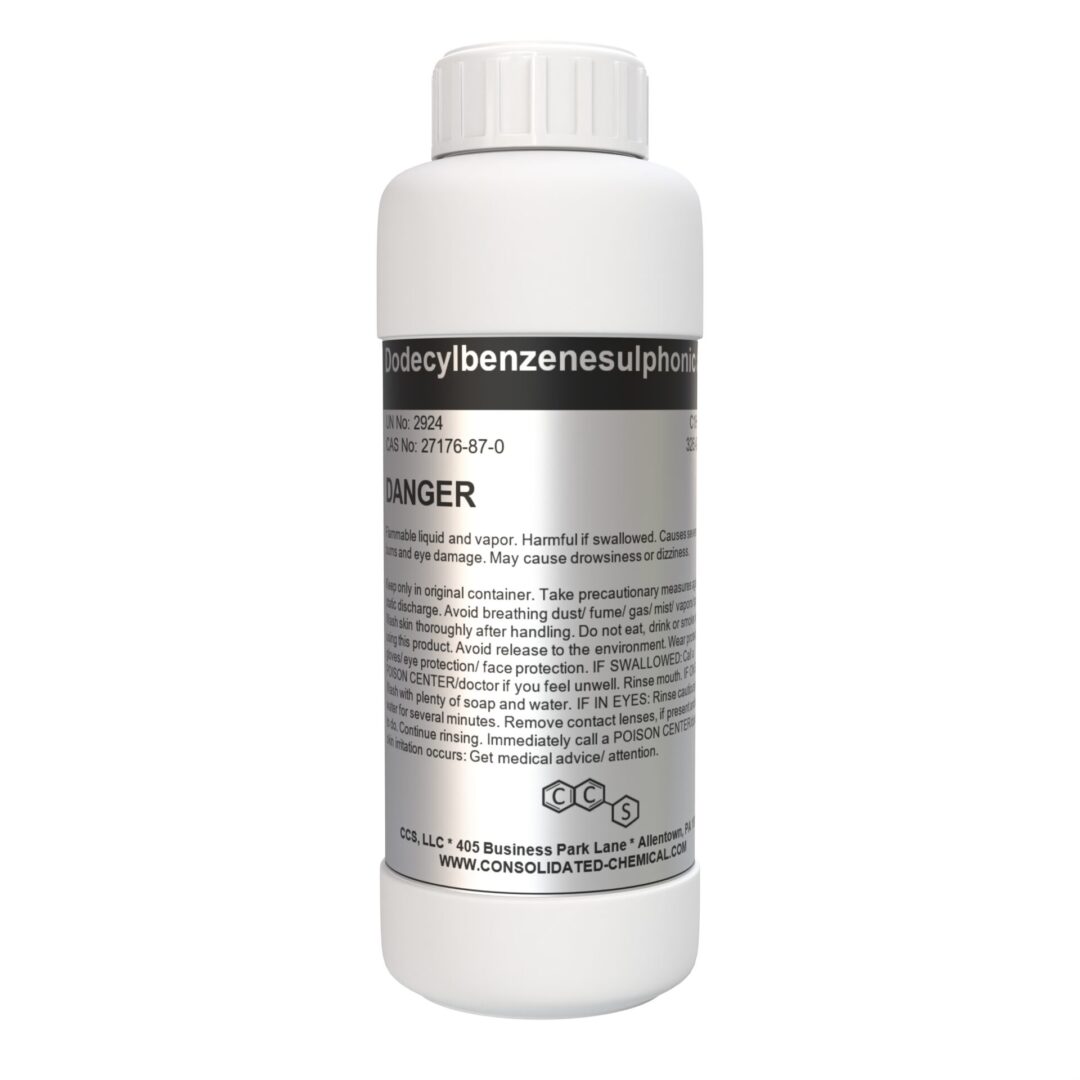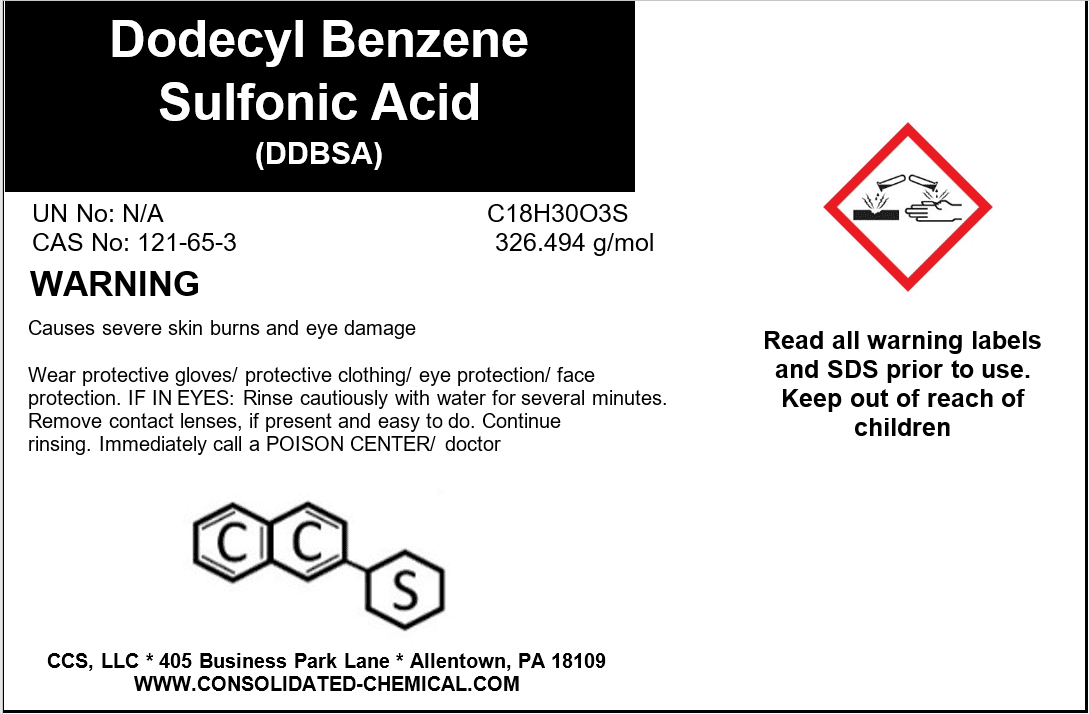Description
Dodecylbenzenesulphonic Acid (DBSA) is a high-performance sulfonated surfactant widely used in industrial and commercial applications. Known for its excellent emulsifying, wetting, and dispersing properties, DBSA is a versatile chemical in detergent production, chemical synthesis, and as an intermediate for manufacturing sulfonates.
Applications of Dodecylbenzenesulphonic Acid (DBSA)
Detergents and Cleaning Products
- Purpose: A primary surfactant in cleaning formulations.
- Applications:
- Liquid dishwashing detergents and laundry detergents.
- Industrial and household cleaning products.
- Degreasers and heavy-duty cleaners.
Chemical Intermediate
- Purpose: A precursor for the production of sulfonates and other derivatives.
- Applications:
- Synthesis of linear alkylbenzene sulfonates (LAS), widely used in detergents.
- Manufacturing of other specialty chemicals.
Oil and Gas Industry
- Purpose: Enhances emulsification and dispersion in oilfield applications.
- Applications:
- Used in drilling fluids to improve stability.
- Assists in enhanced oil recovery processes.
Textile and Leather Processing
- Purpose: Acts as a wetting and leveling agent.
- Applications:
- Textile dyeing and finishing processes.
- Leather tanning and finishing for enhanced texture and uniformity.
Paints and Coatings
- Purpose: Improves the stability and texture of emulsions.
- Applications:
- Emulsifier in water-based paints and coatings.
- Enhances pigment dispersion for uniform finishes.
Agriculture
- Purpose: Improves the efficacy of agrochemical formulations.
- Applications:
- Surfactant in pesticides, herbicides, and fungicides.
- Enhances the spreading and sticking properties of sprays.
Water Treatment
- Purpose: Helps remove impurities and improve efficiency in water purification.
- Applications:
- Assists in cleaning membranes and other equipment in water treatment plants.
Adhesives and Sealants
- Purpose: Acts as an emulsifying and stabilizing agent.
- Applications:
- Used in the production of adhesives for improved texture and bonding properties.
Research and Development
- Purpose: A key reagent in industrial and academic research.
- Applications:
- Study of surfactant chemistry and emulsion technology.
- Development of advanced cleaning and emulsifying agents.
Storage:
- Temperature:
- Store at room temperature (15°C–25°C or 59°F–77°F).
- Avoid exposure to high heat or freezing conditions.
- Environment:
- Keep in a cool, dry, and well-ventilated area away from direct sunlight.
- Protect from moisture and incompatible substances, such as strong oxidizing agents or bases.
- Containers:
- Use tightly sealed, chemical-resistant containers (e.g., HDPE drums).
- Ensure containers are properly labeled to prevent accidental misuse.
- Segregation:
- Store separately from flammable or reactive chemicals.
Handling:
- Personal Protective Equipment (PPE):
- Gloves: Wear chemical-resistant gloves.
- Eye Protection: Use safety goggles or a face shield.
- Clothing: Wear a chemical-resistant apron or lab coat.
- Respiratory Protection: Use a respirator in poorly ventilated areas.
- Work Environment:
- Handle in a well-ventilated area or under a fume hood to minimize inhalation of vapors.
- Avoid eating, drinking, or smoking while handling the product.
- Hygiene Practices:
- Wash hands thoroughly after handling.
- Avoid direct contact with skin, eyes, and clothing.
- Spill Management:
- Use inert absorbent materials (e.g., sand or vermiculite) for spills.
- Avoid flushing into drains or waterways.
- Dispose of spill residues according to local regulations.
- Disposal:
- Follow federal, state, and local regulations for disposal of unused material or waste.







